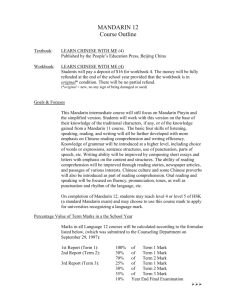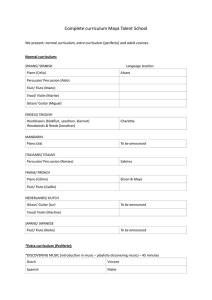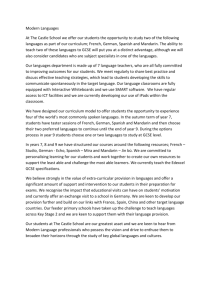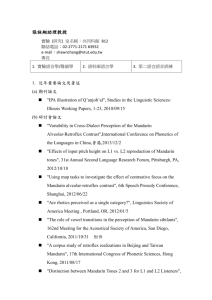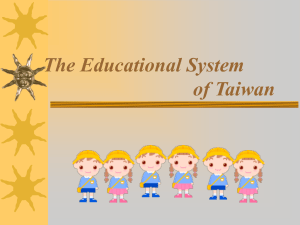Course Description
advertisement
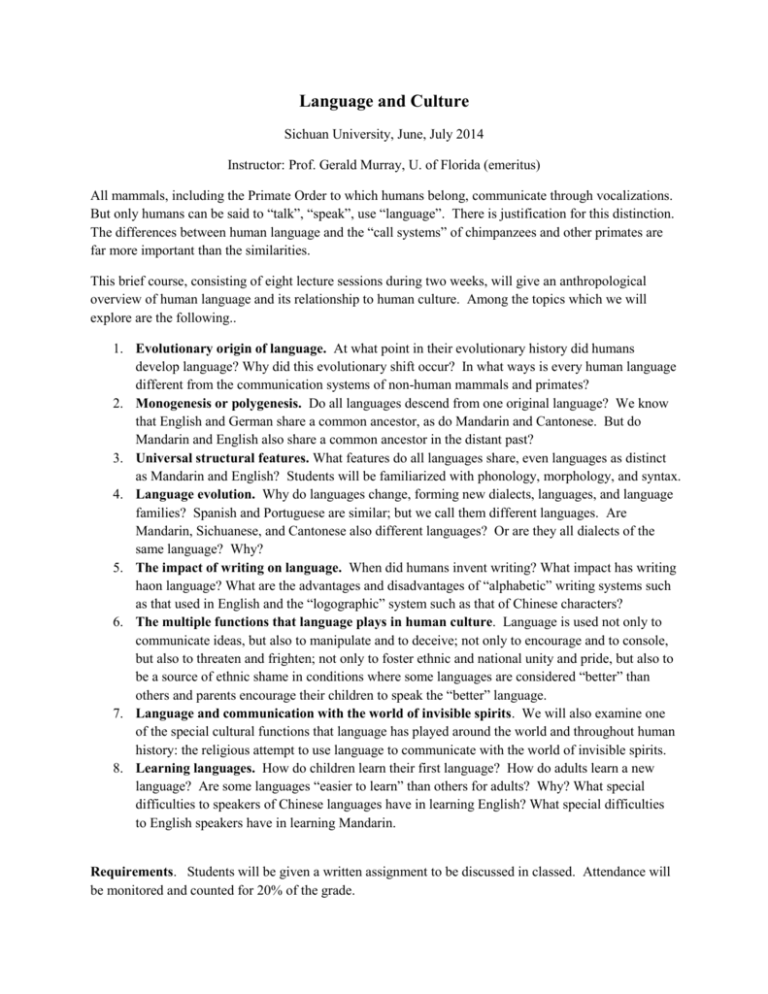
Language and Culture Sichuan University, June, July 2014 Instructor: Prof. Gerald Murray, U. of Florida (emeritus) All mammals, including the Primate Order to which humans belong, communicate through vocalizations. But only humans can be said to “talk”, “speak”, use “language”. There is justification for this distinction. The differences between human language and the “call systems” of chimpanzees and other primates are far more important than the similarities. This brief course, consisting of eight lecture sessions during two weeks, will give an anthropological overview of human language and its relationship to human culture. Among the topics which we will explore are the following.. 1. Evolutionary origin of language. At what point in their evolutionary history did humans develop language? Why did this evolutionary shift occur? In what ways is every human language different from the communication systems of non-human mammals and primates? 2. Monogenesis or polygenesis. Do all languages descend from one original language? We know that English and German share a common ancestor, as do Mandarin and Cantonese. But do Mandarin and English also share a common ancestor in the distant past? 3. Universal structural features. What features do all languages share, even languages as distinct as Mandarin and English? Students will be familiarized with phonology, morphology, and syntax. 4. Language evolution. Why do languages change, forming new dialects, languages, and language families? Spanish and Portuguese are similar; but we call them different languages. Are Mandarin, Sichuanese, and Cantonese also different languages? Or are they all dialects of the same language? Why? 5. The impact of writing on language. When did humans invent writing? What impact has writing haon language? What are the advantages and disadvantages of “alphabetic” writing systems such as that used in English and the “logographic” system such as that of Chinese characters? 6. The multiple functions that language plays in human culture. Language is used not only to communicate ideas, but also to manipulate and to deceive; not only to encourage and to console, but also to threaten and frighten; not only to foster ethnic and national unity and pride, but also to be a source of ethnic shame in conditions where some languages are considered “better” than others and parents encourage their children to speak the “better” language. 7. Language and communication with the world of invisible spirits. We will also examine one of the special cultural functions that language has played around the world and throughout human history: the religious attempt to use language to communicate with the world of invisible spirits. 8. Learning languages. How do children learn their first language? How do adults learn a new language? Are some languages “easier to learn” than others for adults? Why? What special difficulties to speakers of Chinese languages have in learning English? What special difficulties to English speakers have in learning Mandarin. Requirements. Students will be given a written assignment to be discussed in classed. Attendance will be monitored and counted for 20% of the grade.




